Skeletal muscle is essential for movement, posture, and overall health, making up about 45% of the human body. However, sports injuries and fatigue can impact muscle function and recovery. Chinese herbal medicine offers an alternative and complementary solution for optimizing muscle health and recovery in athletes. TCM have been shown to have a significant recovery effect on skeletal muscle, cardiovascular and central nervous system fatigue caused by sports training or intense competition.
The Science of Skeletal Muscle
Skeletal muscles are responsible for generating the forces required for movement. They are made up of muscle fibers, nerves, blood vessels, and connective tissues. When minor injuries occur, like muscle strains, skeletal muscles have a built-in repair system that uses muscle satellite cells to regenerate damaged tissue. These cells, when activated, turn into myoblasts and integrate into muscle tissue to restore function.
Beyond its role in movement, skeletal muscle also acts as a secretory organ, producing molecules known as "myokines”. These substances play key roles in communication between muscles and other organs, such as the liver, pancreas, and brain. Some myokines even have anticancer properties, showing the importance of maintaining muscle health not only for sports but also for overall well-being.
New adipokines secreted from both WAT and BAT are key participants in metabolic homeostasis. In addition to classical polypeptide adipokines, adipose tissue actively secretes many other chemically distinct classes of bioactive molecules. One class of these nonpeptide secreted lipids are termed “lipokines”, which are actively secreted into circulation to exert endocrine effects on target tissues and organs, thus revealing a new mechanism of intercellular crosstalk. It has been discovered that adipokines and lipokines mediate crosstalk between adipose and skeletal muscle, adipokines and lipokines regulate skeletal muscle development and homeostasis and finally adipokines and lipokines may have potential in human health and animal production. For example visfarin secreted by WAT Mediates the polytropic effect of leptin, participates in vascular remodeling and inflammation, exacerbates inflammation targeting the skeletal muscle, adipose tissue but also the Liver,ovaries and the immune cells. Since pain and inflammation are some of the the aftermath of any injury, these recent study results are very important.
Chinese Herbal Medicine and Muscle Recovery
Chinese herbal medicine is heavily neglected in sports medicine. While traditional herbs like Astragalus, Radix Codonopsis, Shiitake, and Rhodiola are well-known for their benefits in promoting muscle recovery and enhancing physical performance we are far from using all the potential of the Chinese Pharmacopeia. When lucky these herbs are used to treat sports injuries and reduce fatigue, allowing athletes to recover more quickly from intense physical activity.
Herbal Impact on Fatigue and Recovery
Fatigue is one of the most common issues athletes face, especially after strenuous exercise or competition. Chinese medicine (TCM) provides a holistic approach to managing fatigue by targeting both physical and mental aspects. Studies show that certain Chinese herbs can improve skeletal muscle recovery, cardiovascular endurance, and central nervous system function, all of which are crucial for athletes.
Astragalus and Radix Codonopsis, for example, are known to strengthen the immune system and promote blood circulation, helping muscles heal faster. Shiitake mushrooms offer anti-inflammatory properties, reducing muscle soreness, while Rhodiola is widely recognized for its ability to reduce stress and increase stamina. Together, these herbs support the body's natural healing processes, helping athletes maintain optimal performance.
Integrating Chinese Herbal Medicine into Sports Medicine
For Western doctors, incorporating Chinese herbal medicine into treatment plans could offer a more comprehensive approach to muscle recovery. Furthermore, TCM’s holistic perspective can aid in addressing not only the symptoms but also the underlying imbalances that cause sports injuries and fatigue.
Athletes, trainers, and doctors can benefit from a multidisciplinary approach that combines the wisdom of ancient practices with modern medical knowledge.
In conclusion, Chinese herbal medicine provides a valuable tool for managing muscle health and recovery in athletes. By promoting natural healing and reducing fatigue, these herbs can enhance physical performance and contribute to a more balanced approach to sports medicine.
References:
ZeHua Yu, WenBin Wang, Kun Yang, JinFei Gou, Yi Jiang, ZhangBiao Yu,
Sports and Chinese herbal medicine,Pharmacological Research - Modern Chinese Medicine,
Volume 9, 2023, 100290, ISSN 2667-1425, https://doi.org/10.1016/j.prmcm.2023.100290.
(https://www.sciencedirect.com/science/article/pii/S2667142523000763)
https://www.sciencedirect.com/topics/medicine-and-dentistry/skeletal-muscle
T. Shan et al., Lkb1 regulation of skeletal muscle development, metabolism and muscle progenitor cell homeostasis
J Cell Physiol (2017) L. Wang et al., The regulatory role of dietary factors in skeletal muscle development, regeneration and function
Crit Rev Food Sci Nutr (2022) C. McGlory et al., The impact of exercise and nutrition on the regulation of skeletal muscle mass



